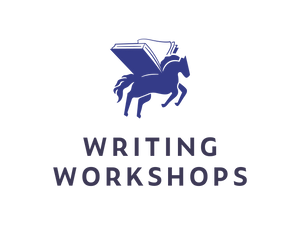In this innovative workshop, Erica invites writers of all levels and genres to delve into the realms of the weird and wonderful, offering a transformative experience for those eager to explore the uncanny, surreal, and supernatural through their writing.
The course centers around the powerful technique of defamiliarization, a method that challenges and reshapes familiar concepts into something intriguingly unfamiliar. Erica will guide participants through the intricate process of avoiding common writing pitfalls like abstraction and clichés.
Drawing inspiration from Mary Karr’s insightful essay "Sacred Carnality", the workshop focuses on converting abstract ideas into vivid, sensory experiences that engage the five senses, and then elevating these to create striking, original imagery.
This hands-on class promises not just learning but also the creation, ensuring participants walk away with at least four new works in progress. Whether you’re just starting your writing journey or looking to add a new dimension to your skills, Erica’s workshop promises to be a fertile ground for creativity, learning, and community-building.
Hi, Erica. Please introduce yourself to our audience.
I’m a writer and educator with close to two decades of teaching experience. I hold an MFA in poetry from the University of Iowa, and a doctorate in English from UNLV. I’m also the owner and facilitator of Witch Lit.
What made you want to teach this specific class? Is it something you are focusing on in your own writing practice? Have you noticed a need to focus on this element of craft?
I use and teach the technique of defamiliarization because it’s fun! I’d rather read about a man who literally becomes ungeheueres Ungeziefer or "monstrous vermin" like Samsa in Kafka’s “Metamorphosis” than a man who just feels like a “monstrous vermin” any day. Inside of the defamiliarized image in the first line, “One morning, when Gregor Samsa woke from troubled dreams, he found himself transformed in his bed into a horrible vermin” is the beginning of a compelling plot. The reader can’t help but ask, “What happened next?” and is hooked.
Give us a breakdown of how the course is going to go. What can the students expect? What is your favorite part about this class you've dreamed up?
We’ll read about angels, ghosts, beasts, and monsters. We’ll also write in response to prompts. Students will have an opportunity to share and receive only supportive feedback. My favorite part of any class is learning from my students. Everyone brings a different perspective, and a wealth of experience.
What was your first literary crush?
C.S. Lewis. I even made a diorama of Narnia! Narnia began with an image from a dream: a faun under a lamppost. It’s inspiring that this dream image gave birth to this beloved series. I encourage students to “write your weird” because this tapping into the collective unconscious may generate just the piece of writing the world didn’t know it needed.
What are you currently reading?
I return to Uses of the Erotic: The Erotic as Power by Audre Lorde again and again. I’m also reading The Anti-Racist Writing Workshop: How to Decolonize the Creative Classroom by Felicia Rose Chavez.
How do you choose what you're working on? When do you know it is the next thing you want to write all the way to THE END?
When the piece has its own theme song and will not leave me alone until it’s done! This happened with my flash creative non-fiction piece “Tarot for the Bardo.” Every time I listened to “Cassandra” by Florence and the Machine in my car, I knew I had to finish it.
Where do you find inspiration?
Reading, forest-bathing, moon-gazing, Tarot, and cat videos.
What is the best piece of writing wisdom you've received that you can pass along to our readers? How did it impact your work? Why has this advice stuck with you?
As an undergraduate, my poetry professor Bill Knott shared a famous anecdote about the painter Degas and the poet Mallarme. Degas said he had a lot of great ideas for poems but couldn’t write them. Mallarme said, “Poems are not made from ideas, but from words.” I began to see language as a material. When I trusted imagery and sound in my poetry, it became more imaginative than my rational brain would have allowed.
What is your favorite book to recommend on the craft of writing? Why this book?
There are so many! But most recently, I enjoyed Meander, Spiral, Explode: Design and Pattern in Narrative by Jane Alison. I love how she identifies forms in nature that occur in narrative as an alternative to Freytag’s Pyramid, which she sees as a masculine model.
Bonus question: What’s your teaching vibe?
A horse on roller skates! I aim to create a fun environment where anything is possible in our writing, including laughter. But I’m also very serious about close reading and learning from what we’ve read. While there are no “rules,” there are techniques we can use in our own writing. I aim for students to walk away empowered with the knowledge of those techniques the next time they face the blank page.

